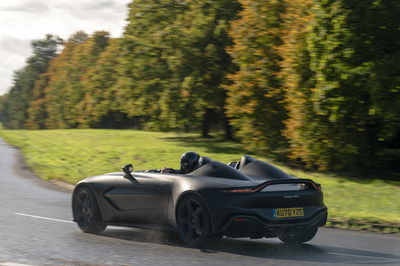New GMC Hummer's Infotainment System Will Use The Unreal Engine

If you’d have told my pimply-faced self playing Unreal Tournament 20 years that the game’s technology would one day find itself powering a car’s infotainment system, I’d have probably said: “what’s an infotainment system?” And carried on playing.
But in any case, it’s a sign of what a colossus the Unreal Engine has become since its first use for 1998 first-person shooter Unreal. The game architecture is now in its fourth generation, with the fifth-generation engine on the way. As well as being used for the license to print money that is Fortnite, Unreal is set to be used for the all-electric, 1000bhp GMC Hummer’s digital cockpit and infotainment systems.
This isn’t Unreal’s first foray away from the game’s industry - it’s been used in TV production (perhaps most famously with The Mandalorian and Westworld) - and nor is it the first automotive application. The technology has been used to power multiple dealer-based configurator systems - including one for McLaren - although this is the first time Unreal has been used for digital cockpits.
Unreal owner Epic Games hasn’t said exactly how its ‘human machine interface’ (HMI) is integrated into the Hummer, pledging that we’ll find out more when the electric powerhouse is revealed on 20 October, but some of the system’s benefits have been noted. One is load time - some infotainment setups, Epic says, can take as long as 10 seconds to initially load. Our recent experience with the new VW Golf certainly yielded some painful start-up times, but that’s apparently not an issue with Unreal - it’s said to boot up “extremely quickly” thanks to non-essential features being loaded slightly later in the background.

It also gives the design process a leg-up. Rather than producing reference imagery for the user interface which engineers are tasked with implementing, Unreal’s workflow process lets designers check their work in situ and make changes as necessary. “A proposed HMI module may have trouble areas when the sun is low and behind the vehicle,” Epic says, adding, “Rather than the tester filing a ticket and sending an awkward photograph of the issue to the designer, the designer can sit in the vehicle and make the adjustments themselves”.
Finally, it should all look very pretty, and potentially quite different from the systems we’ve come to know over the last few years. The digital gauge cluster is one area where options are said to be “suddenly wide open”.

We’ll no doubt see more carmakers using the Unreal Engine over the next few years, along with other third parties - the Polestar 2, for instance, uses a Google Android setup. Given the shonky nature of a lot of modern infotainment systems, this can only be a good thing.















Comments
Can’t wait to play Civ 6 and Rocket League on a 1000 HP car